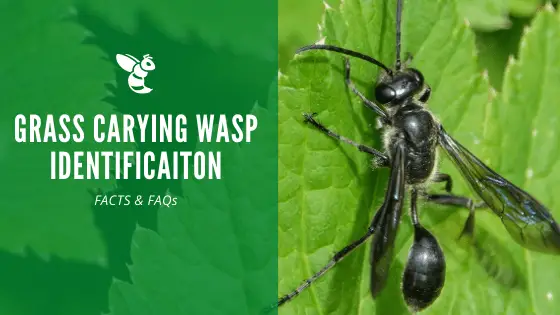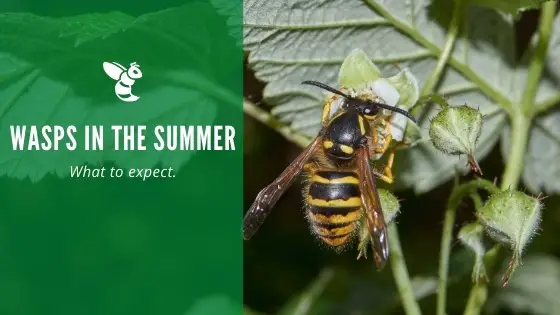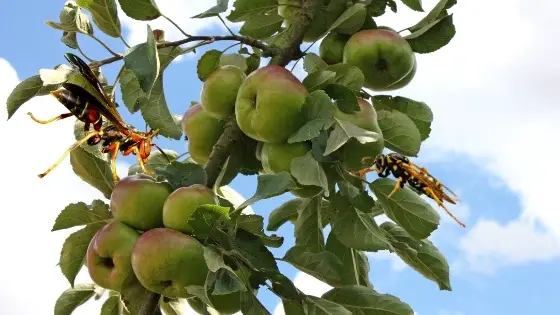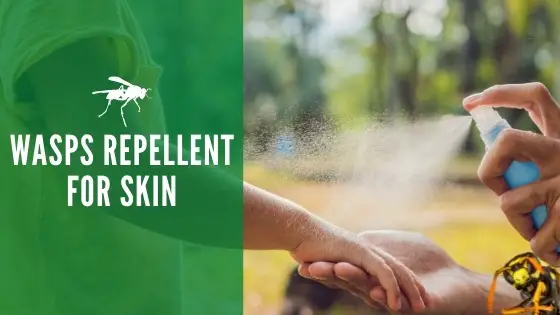Grass-Carrying Wasp Identification & Facts

When the temperatures outside are dropping, you may find nest material in your yard. This is the time of year when many insects/wasps will die off from their colonies. The queen will generally remain, but she will need to find a more suitable home for the winter. This is often located inside of a home, shed, garage, etc.
When you first spot nesting material, you might not be sure what pest created it. If you see blades of dry grass, you may be dealing with grass-carrying wasps. Their nests can be a nuisance if they’re in your way or unsightly, but they’re typically alone, so you don’t have to worry about things getting too out of hand if they’re buzzing around. They’ll be sure to leave you alone if you leave them be.
Grass Carrying Wasp Nest Locations
Grass carrying wasps are solitary, so their nest is constructed for them alone. You may find the nest of the grass carrying wasp in the track of your windows. They also make their home in abandoned bee nests and inside of rotted branches/stumps. They are found in the United States, most commonly in Pennsylvania.
Do Grass Carrying Wasps Sting?
In general, grass-carrying wasps are irritating if they’re making their nest in areas where you are coming in and out or opening windows, but this is not an overly aggressive variety of wasp.
Though they will sting when threatened or very close to you, it takes quite a bit of agitation to get them riled up. They aren’t bothered by being close to humans unless the humans are trying to remove them or their nest. This is why they don’t think twice about nesting so close to your activity.
Their black-colored body length is around 188 mm long, with red/brown wings. They have long hairs on their thorax that are white.
Are Grass Carrying Wasps Beneficial?
Grass carrying wasp assist in the pollination of nearby plants. Their more subdued behavior makes them easy to tolerate, as long as they’re not too close to your home. If you want to attract them to your yard for the benefit of nature, you will want to provide them with nesting materials.
You can take hollowed out stems or dried grass and place them in bunches around your yard. You’ll also want to keep your yard pesticide-free.
How to Repel Grass-Carrying Wasps
If you find a small nest or cocoon in the tracks of your windows or doors, you have to remove it. This isn’t the same as a large colony nest with hundreds of wasps inside of it.
You can utilize pesticides if you want to make sure that the grass carrying wasp will not return, but they’ll usually get the hint and move on once you remove their nest. They associate this process with their choice of location being unsafe. Just be careful with the products that you choose.
You don’t want to apply a toxic product in an area where you’ll have airflow pushing the odors inside of your home. This is also an area commonly touched by pets or small children who don’t know any better.
How to Get Rid of Wasp Nests in Window Frame
If you’ve come across the nest of a grass carrying wasp, it won’t be very big. It might just look like a small clump of grass or stems made its way into the track of your window or door. Before you do anything, you’ll want to observe the nest to see if there is a wasp inside it.
You should see some movement if it’s currently occupied. If there doesn’t seem to be anything inside the nest, you can remove the material and discard it. Just be sure that you’re wearing protective gloves and clothing just in case you come into contact with the nest’s tenant.
If you find that grass-carrying wasps keep trying to make nests in the same area, you can turn to a natural pesticide repellent that will keep them at bay.
Conclusion
Your typical grass carrying wasp will be most active in the early months of the summer. This is when they will mate and look for a nest site. You may see an eager female wasp trying to hurry to create her cocoon. This is where she will keep her larvae.
She will bring back crickets and insects as food. If you can leave the nest alone, it’s a fascinating process to observe as the larvae turn into adults within the next 2 to 3 weeks. The grass carrying wasp moves very meticulously to create a cocoon-like nest out of fine blades of dry grass.
They transport each blade through the air, and then they pull each blade into the nest that they’re building.



